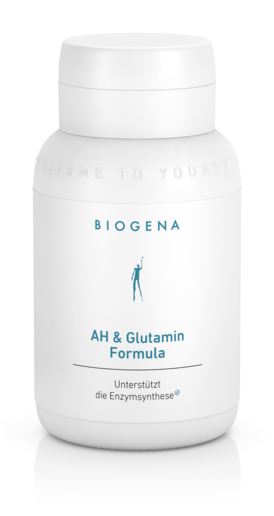
Intolerances
How many people have an intolerance?
A piece of cheese, a handful of grapes, a loaf of white bread. What starts as a treat turns into a walk of penitence for many people. According to a nutrition report by IMAS (2020), 7% of Austrians surveyed said they suffered from a medically certified food intolerance. However, the number of unreported cases is significantly higher. According to estimates, around a quarter of the European population suffers from food intolerance.
What is an intolerance?
With a food intolerance, the digestive tract lacks special enzymes or transporters, which means that certain food components cannot be digested properly. Problems arise if certain quantities are then provided via a diet that exceeds the individual tolerance limit.
Aside from some classic and well-known food intolerances such as fructose or lactose intolerance, there are also individual intolerances. They can burden the everyday quality of life of sufferers but do not lead to further severe consequences.
Why do people get intolerances? Can they occur suddenly?
Food intolerances can have different causes. While congenital intolerances are rather rare, the majority of those affected only acquire the respective digestive problems throughout their lives. For some people, this can come as quite a surprise, because suddenly they can no longer tolerate certain foods that they used to enjoy without any problems.
According to experts, the fact that increasing numbers of people feel ill after eating could be a consequence of the excess of certain food components in our diet - and a resulting overload of the digestive system. Not only do we ingest many of the potential culprits several times a day (e.g. in the form of smoothies, fruit juices, or countless dairy products), but they are also used by the food industry as additives for various purposes (e.g. as sweeteners or fillers).
If an excess is at the root of the problem, it is often enough just to avoid these substances to get the complaints under control. Especially at the beginning of the treatment, the culprits (such as fructose, lactose, and histamine) should be completely avoided for a while. This allows the intestine to regenerate and thus become receptive again to certain, individually varying amounts.
“Multi-intolerances” (several intolerances in one person) in particular probably originate from an irritated bowel. For instance, food allergies/intolerances, antibiotics, additives, or gastrointestinal infections can affect both the intestinal flora and the intestinal mucosa, which in turn can be detrimental to digestive enzymes and transporters.
Some typical food intolerances
Food intolerances are particularly common in the case of lactose, fructose, gluten, histamine, and glutamate. This is a summary of what distinguishes these typical food intolerances:
Lactose intolerance
In Austria, about 15-20% of the population suffers from lactose intolerance. It may sound like a lot, but around three-quarters of humanity worldwide cannot tolerate lactose. In a healthy person, the intestinal mucosa produces the enzyme “lactase”, which breaks down lactose into its building blocks so that it can be absorbed into the body. For people who have trouble digesting lactose, the targeted supply of lactase improves tolerance. If the enzyme production is limited or disturbed, the lactose that is not broken down causes the digestion to rebel.
Typical symptoms of lactose intolerance
Typical symptoms associated with lactose intolerance are diarrhea, abdominal pain, nausea, or feeling full, but also non-specific other symptoms such as headache. These symptoms occur because gases and acids tend to form in the large intestine if the milk sugar is not digested.
Possible problem foods
If you are lactose intolerant, it’s not just products made from cow’s milk that require extra caution. Products made from goat’s and sheep’s milk can also cause intolerance symptoms. In addition, many unsuspected foods also contain the “problem substance”. Lactose can be hidden in bread, sausage, sweets, and ready-made meals as a flavor enhancer, binding agent, or stabilizer. Those with a lactose intolerance who want to be on the safe side should therefore always take a careful look at the list of ingredients.
Fructose malabsorption
In the case of fructose malabsorption, fructose cannot be absorbed fully or partially from the intestine into the body due to a transport defect. The excess fructose therefore reaches the large intestine, where it is broken down by the bacteria of the intestinal flora and can lead to more or less pronounced symptoms in individual cases.
Typical symptoms of fructose malabsorption
Fructose malabsorption typically manifests itself in digestive symptoms that include bloating, flatulence, and diarrhea. In addition, various health disorders can arise from or accompany the malabsorption, including depression or vitamin deficiencies.
Possible problem foods:
Fructose is found in fruits and vegetables in varying concentrations. It is also increasingly used in the food industry. The sugar substitute sorbitol should also be used with caution in cases of fructose intolerance because sorbitol interferes with the absorption of fructose in the intestine, which aggravates the symptoms of fructose malabsorption.
Caution is advised with, among other things:
- Various types of fruit such as apples, pears, watermelon, grapes
- Some vegetables such as beetroot, cabbage, onion
- Fruit juices, smoothies, fruit syrups, lemonades
- Jam, fruit puree or compote, honey
- Dried fruit such as sultanas, prunes, dates
- Diet and diabetic products containing fructose and/or sorbitol
- Sweets containing fructose
- Industrially processed foods with hidden fructose such as sauces, ketchup, or ice cream
The individual tolerance threshold for fructose varies greatly. Small amounts of fructose are usually well tolerated.
Caution! Fructose malabsorption ≠ fructose intolerance
Fructose malabsorption should not be confused with congenital fructose intolerance - a genetic enzyme defect that occurs very rarely. In this case, a strictly fructose-free diet is necessary, as even small amounts can lead to life-threatening reactions!
Histamine intolerance
While healthy people can eat histamine-rich foods without any problems, people with a histamine intolerance lack the histamine-degrading enzyme DAO (diamine oxidase) in their intestines. If those affected eat too much histamine, the breakdown system in the intestine is overloaded. As a result, too much histamine enters the body, leading to intolerance reactions.
Physicians and scientists assume that histamine intolerance is generally acquired during life. A congenital degradation disorder occurs only very rarely.
Typical symptoms of histamine intolerance
Unlike various other food intolerances, sufferers do not react to histamine intolerance simply with digestive disorders. Symptoms such as itching, palpitations, headaches, asthma, nasal congestion, skin redness, and hives are also widespread.
Possible problem foods:
Histamine is present in almost all foods in varying concentrations. Foods that are particularly rich in histamine are ripened, fermented, microbially produced, or rotten foods. In addition, several foods act as so-called histamine liberators - i.e. they release additional histamine in the intestine.
To be enjoyed with caution in case of a histamine intolerance:
- Cheese (the more mature, the more histamine)
- Meat and sausage such as salami and bacon
- Fish, especially canned fish, and seafood
- Certain fruits such as strawberries and citrus fruits
- Certain vegetables such as tomatoes and spinach
- Sauerkraut
- Legumes such as chickpeas, soybeans and peanuts
- Alcoholic drinks such as red and sparkling wine
Product tip: DAOZym®
An innovative combination product of the histamine-degrading enzyme DAO and the amino acid L-glutamine
Glutamate intolerance
When it comes to the flavour enhancer monosodium glutamate and its possible effect on some people, doctors and scientists tend to have different opinions. While some assume there is a special intolerance reaction, others do not see this as such. However, there seem to be more indications that some people react more sensitively to the consumption of monosodium glutamate. Since this flavour enhancer is used, for example, in Asian food, this used to be called the Chinese Restaurant Syndrome (now outdated).
Those affected report a pseudoallergic reaction with symptoms such as headache, back pain, dizziness, skin redness, palpitations, irritability, etc. Asthma attacks are also sometimes mentioned. Glutamate itself is a naturally occurring substance in the body, which is bound to various proteins. Glutamate is also naturally present in protein-rich foods, such as meat, fish or cheese. The monosodium glutamate used as a flavour enhancer is not bound to proteins. The symptoms described are associated with free, unrelated glutamate.
Possible problem foods:
Glutamate has been used by the food industry for over a century to flavour many products. These include, for example, spice mixes, sauces, crisps, canned soups and ready-made pizza. Caution is advised when ingredient lists state “monosodium glutamate” or an E-number between 620 and 625 (usually E621). Glutamate can also be hidden behind ingredients such as “flavouring”, “seasoning”, “meat extract”, “yeast extract” and “fermented wheat”.
Gluten intolerance vs. coeliac disease - what is the difference?
With the term gluten, many people think of the inflammatory intestinal condition coeliac disease. In addition to coeliac disease, in which the body's immune system attacks the adhesive protein in wheat and thereby damages the intestinal mucosa, sensitivity and thus intolerance to gluten as well as wheat is described. Due to the symptoms, the delimitations are initially difficult, because in all cases severe digestive problems with abdominal cramps and the like also occur with a wheat allergy. Gluten sensitivity is an intolerance and therefore not a serious disease such as coeliac disease.
The difficult-to-digest gluten protein does, however, have a natural counterpart: the AN-PEP enzyme from the food fungus Aspergillus niger. This enzyme breaks down the gluten proteins into smaller, more manageable fragments and thus facilitates the digestion process.
Possible problem foods:
Gluten, also known as wheat protein, is found in several grains such as wheat, barley, rye, triticale and oats and their products. It is mainly used in the processing of doughs to improve their viscosity and extensibility, but also to stabilise the end product. High levels of gluten are therefore found not only in baked goods and pasta but also in convenience products, sauces and confectionery, where the protein is used as an additive.
Product tip: GluteZym®
Active complex of minerals and with the enzyme Aspergillus niger prolylendopeptidase (AN-PEP), which helps to break down gluten.
Test & diagnosis – Determining intolerance
How can a food intolerance be determined? Various test procedures are available today for typical food intolerances. Therefore, test procedures can provide clarity if a food intolerance is suspected (e.g. breath tests, blood tests). The presence of these tests has also led to food intolerances being detected more frequently today. This seems to support the view that these intolerances are increasing. Whether this is the case and whether this has anything to do with the diet of the modern Western lifestyle cannot be clearly stated.
Where can you test for an intolerance?
If you suspect that you are suffering from an intolerance, your first port of call should be your doctor. Doctors provide advice and can refer patients to specialists if necessary.
Living with food intolerances
Since food intolerance is generally annoying but not dangerous (in the sense of a disease) for the human body, relief comes primarily from changes in the diet. Those affected may have to change their dietary habits and avoid predominantly trigger foods.
In addition, for the intolerances triggered by an enzyme deficiency, products are available today as dietary supplements that supply the enzymes. For example, lactase can be absorbed with such a product or the enzyme that breaks down histamine. With some acquired intolerances, an improvement can be achieved by temporarily avoiding the trigger food, or the intolerance can even be eradicated by avoiding it altogether.
A combination of dietary adjustment and the addition of missing enzymes helps many sufferers to successfully metabolize the intolerance triggers. Enzyme products are also available today that can support the digestion of certain food groups such as carbohydrates.
In this context, it is very important for those affected not to simply grin and bear their digestive problems, but to get to the bottom of the possible causes. However, not all digestive problems are due to food intolerance. Sometimes it is a combination of different factors that impairs digestion.











